With the myriad of pocket pistols available today it can be hard to pick one that’s just right. I held off on a .380 to replace my old KelTec P32 for years since most of the .380’s were similar size and held six rounds while my .32 ACP was held seven. Not enough of a difference to matter, at least for me. That changed when Ruger released the LCP Max. Once I could go to a similarly sized gun with 10 rounds of .380, or 12 rounds with the slightly extended mag, upgrading was a no-brainer.
Still super-compact, bigger caliber, and almost double the capacity with the 12-round mag plus better sights to boot. About the only thing I haven’t loved about the LCP Max was its somewhat long, mushy trigger. Then I got an e-mail from M*CARBO and everything changed.
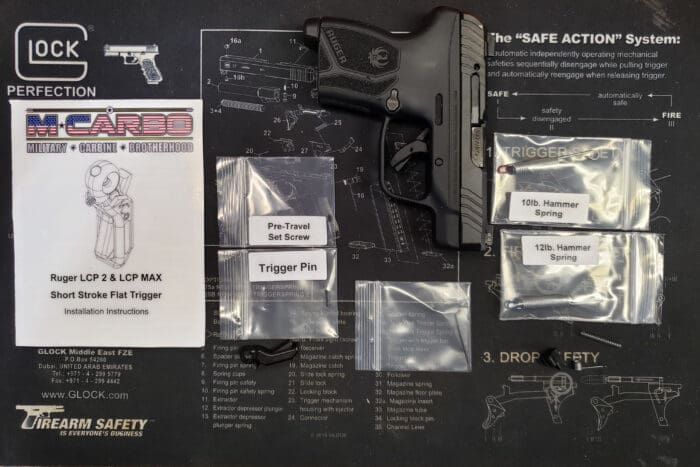
A Short Stroke Flat Trigger and Spring Kit
I was already familiar with M*CARBO from their upgrades and accessories for the various KelTec products, and I’d used them on my SUB-2000 carbine and was happy with them. When I got the e-mail about an updated trigger and spring kit for the LCP Max I reached out and ordered a set immediately. The Ruger LCP Max Trigger Spring Kit was $29.95 and the Ruger LCP II and LCP MAX Short Stroke Flat Trigger was $54.99. About $85 for an at-home trigger upgrade is competitive with a decent mid-grade GLOCK trigger kit.
M*CARBO claims the spring kit will reduce your trigger pull from a factory weight of around seven pounds, down to between 5.75 and 4.5 pounds. It comes with both 10- and 12-pound hammer springs to give you some options on setting up your pull weight. It also includes a trigger return spring, firing pin spring and a firing pin installation fixture.
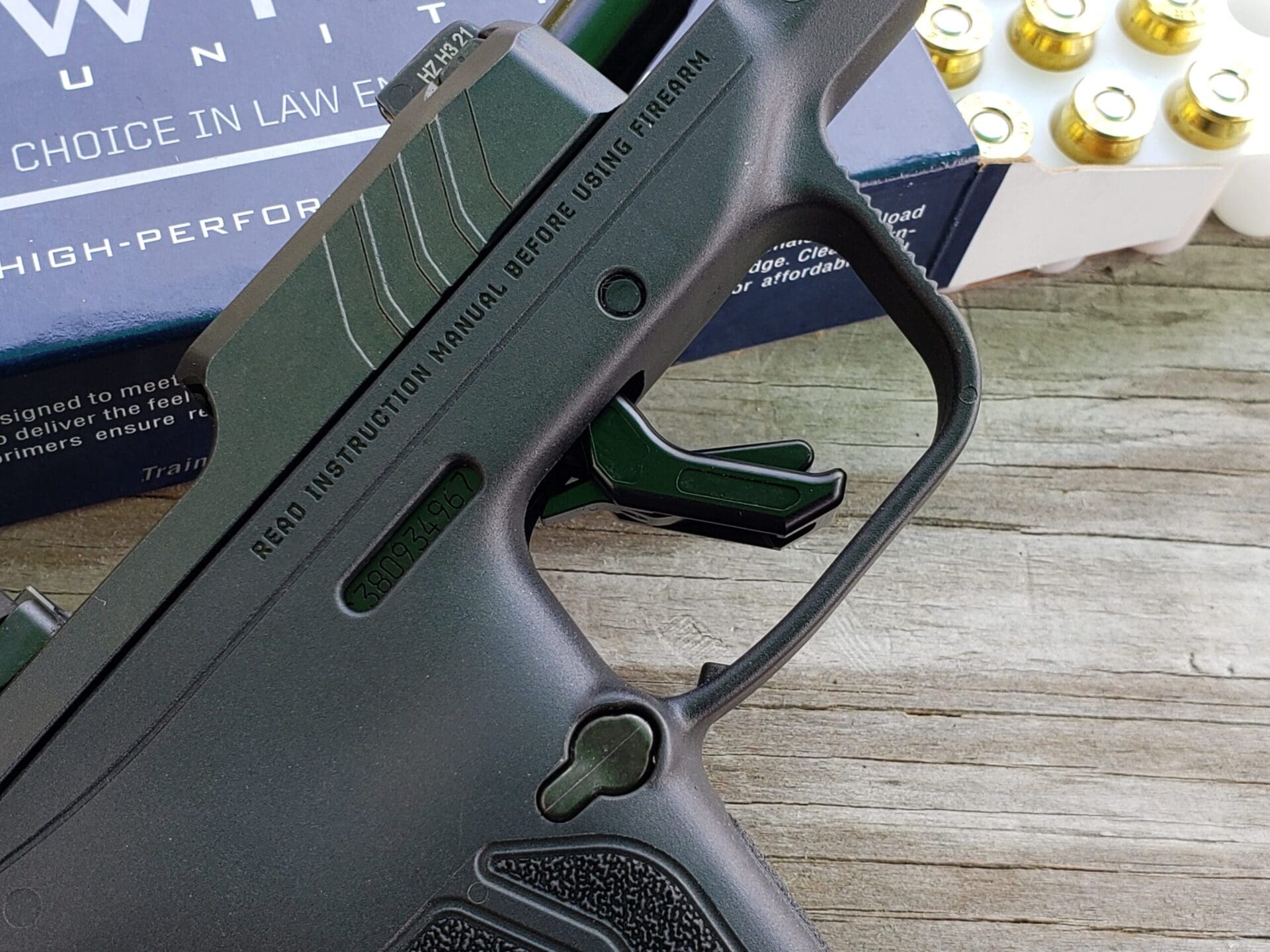
The flat trigger is CNC machined from 6061 aluminum with a black finish. It will work not only with the LCP Max but also the LCP 2 in either .22LR or .380 ACP. It’s an adjustable short-stroke trigger that they say can reduce the amount of pre-travel on the LCP Max trigger by up to 83% according to M*CARBO.
The adjustment can be made with the trigger installed, too, so you don’t have to take the gun apart to tweak it. The trigger has rounded edges to prevent trigger bite, and it comes with a heavy duty black Nitride coated trigger pin, a 5/32 inch set screw, and an appropriately tiny .05 inch Allen key.
M*CARBO is a veteran owned and operated company and their products are made in the USA, and are covered by a lifetime warranty.

Installation
Let me start by saying that I had never fully disassembled my LCP Max beyond basic field stripping for cleaning. I can malletize GLOCKs and AR’s together, but wouldn’t consider myself a gunsmith by any stretch of the imagination, nor am I even particularly mechanically inclined.
Luckily for me (and you) M*CARBO has some great installation videos on their website and Youtube that walk you through the installation process. You get a decent set of printed instructions as well, but I found following along with the videos to be especially helpful.

You don’t need a lot of tools for the process either. Some punches, a hammer, a flat head screwdriver, some Loctite, a bench block (or a roll of masking tape) and some safety glasses.
I sat down at my workbench and brought the video up on my phone and just followed along. It was well filmed and very straightforward. I could pause it or go back when I needed to and between it and the printed instructions I managed to actually disassemble my LCP Max and install the new parts and get it back together quickly with a minimum fuss and only a moderate amount of swearing. Honestly, if I could do it without any bloodletting or chucking the parts across the room in frustration, I’m pretty sure anybody can.

Trigger Feel and Testing
With the the factory trigger my LCP’s pull weight was around 7.5 pounds and had a long reset. After installation, using the 12-pound hammer spring, my trigger pull weighed in just under 4.5 pounds, right at the low end of M*CARBO’s estimate.
Aside from being lighter, the pull is also much crisper now. There’s still some initial take-up on your first shot, but there’s an obvious stopping point (wall) before the trigger breaks. After firing the first shot there is now a short reset with an audible click before firing the next shot. It isn’t as short as a striker-fired trigger, but it’s significantly better than the factory Ruger trigger.
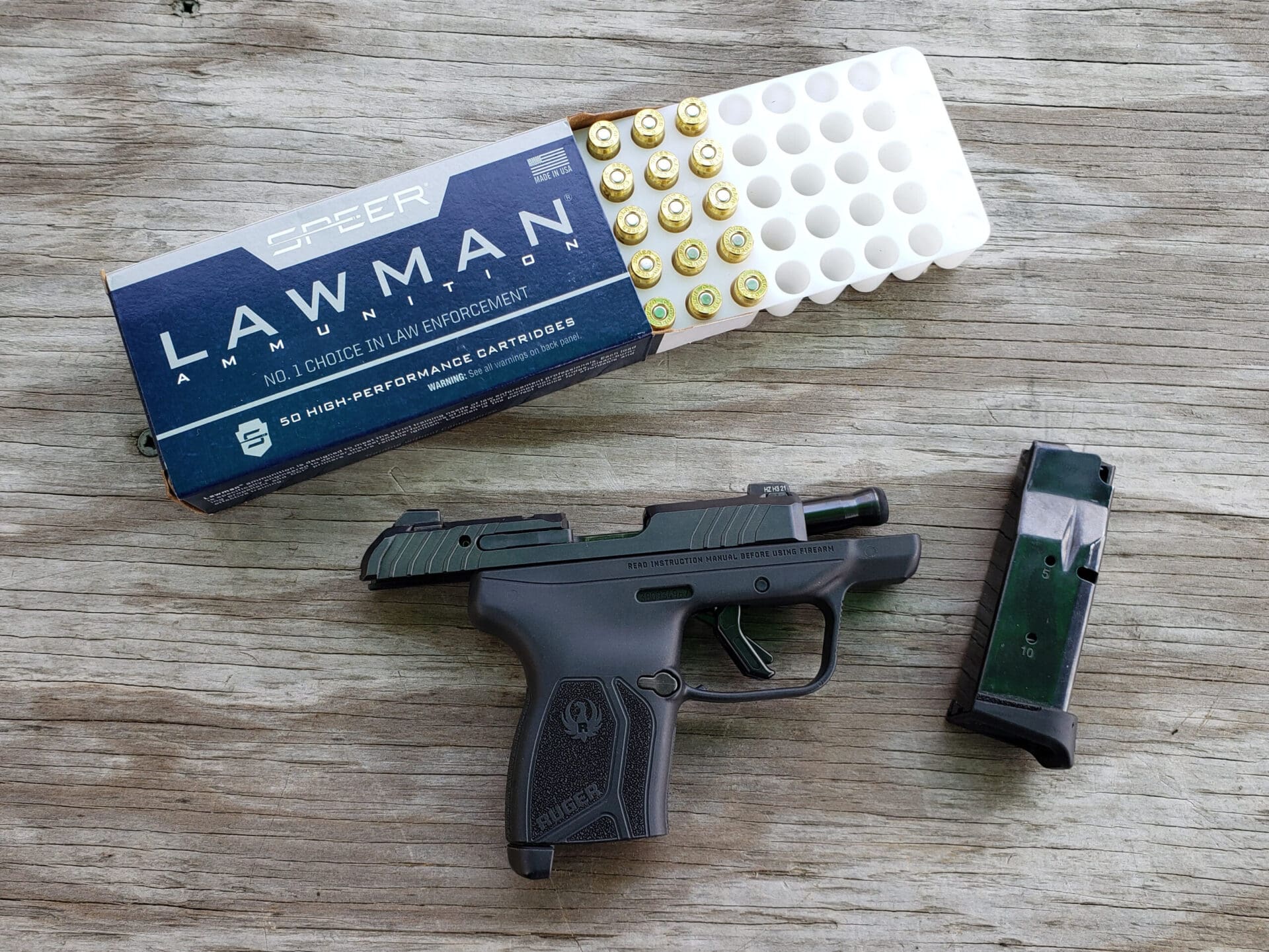
Even though everything looked good via a function check and dry firing, I wanted to make sure everything was working reliably since my LCP Max is a carry gun. I took a trip to the range with a mix of Speer Lawman 95gr FMJ ammo and Steinel 80gr solid copper hollow points, which are my carry load.
I ran around 100 rounds through the pistol with no issues whatsoever. Reliability was unchanged, which is always a concern when you swap out a major component like the trigger and springs. While the trigger felt good dry-firing it at the workbench, you can really see the difference on the range. Knocking three pounds off the trigger’s pull weight, accompanied by a crisper let-off, helped tighten up my groups considerably and the short reset helped with faster follow-up shots.
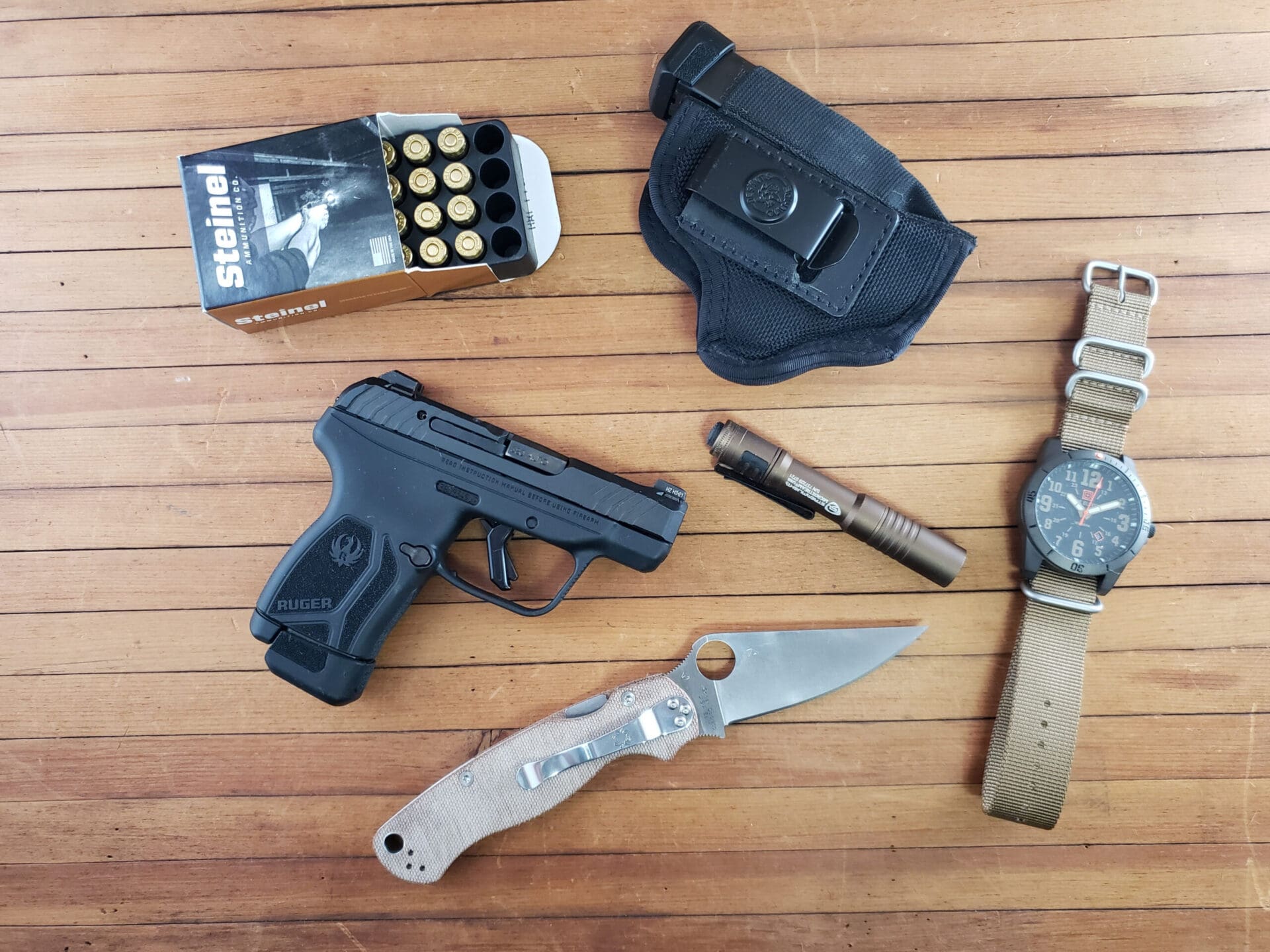
The most important aspect of a carry gun is that it goes bang every time you need it to, and the LCP Max still does that admirably despite me being the one to do the trigger upgrade. As I said, if I can do this anyone can. Just follow the printed instructions or follow along with M*CARBO’s videos and you’ll be judt fine.
The next big thing is actually being able to hit your target and the MCARBO Short Stroke Flat Trigger and LCP Max Spring Kit definitely make that easier. If you like the LCP Max, but always felt that it could be a little better, then MCARBO has got you covered. For the cost of a few boxes of ammo you can significantly improve the trigger on your pistol and improve the accuracy and speed of a gun you depend on for self-defense. That’s a pretty good deal, especially when you can do it in an hour or less at your kitchen table.

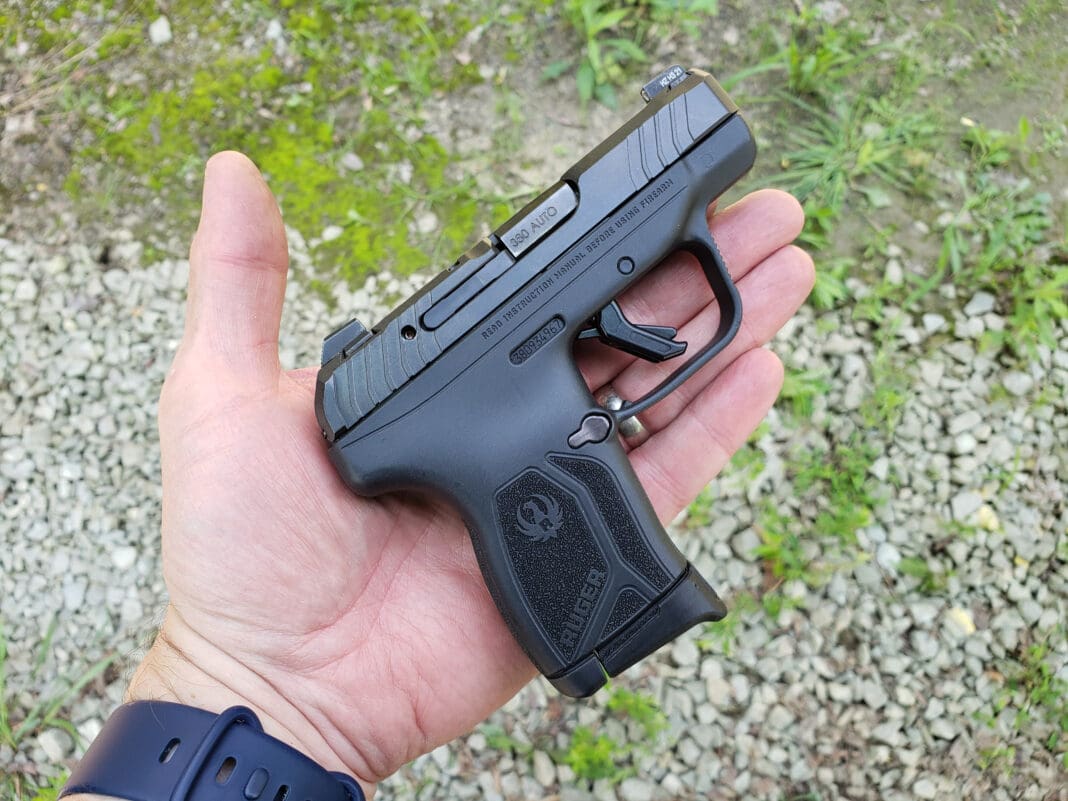





Good review, and I too love MCARBO’s installation videos – by far the best gunsmithing videos (of any kind) I’ve ever seen, with lots of best practices and tricks beyond just the basics of disassembly and reassembly.
Stock trigger’s fine.
Hundreds and hundreds of words…🙄
I don’t understand how semi-auto handgun manufacturers almost invariably make their “value” handguns with sub-par triggers. Are there really any significant additional engineering or manufacturing costs to making them with better triggers such as this trigger upgrade?
I have to believe spring costs are the same whether the manufacturer uses a 10-pound or a 12-pound spring. And the trigger group components on sub-par versus upgrade triggers would seem to have basically the same fabrication cost regardless of the geometries involved.
Maybe manufacturers simply do not understand what a very good trigger is and hence they do not design/manufacture for it?
In my comment above I stated, “Maybe manufacturers simply do not understand what a very good trigger is …”.
That actually brings up a very interesting question: what is a “very good” trigger on a semi-auto pistol?
In my opinion it means the following on a semi-auto self-defense carry pistol:
1) Reasonable length of take-up, perhaps less than 3/8ths of an inch.
2) Smooth take-up of about 3.5 pounds before hitting “the wall”.
3) Crisp break at the wall–and about 5.5 pounds to break.
4) About 1/8th of an inch over-travel past “the wall” to rigid stop.
5) About 5/16 of an inch of reset travel which is smooth.
6) Tactile and audible click upon reaching the reset point.
Is that what a “very good” trigger should be like?
I blame legal departments (and sue-happy customers who blame manufacturers for their own negligence) rather than engineering or gunsmithing ignorance.
When you go out of your way to buy one of these upgrade packages, it’s you and not OEM making the choice for the lighter, shorter trigger. Also, if an aftermarket kit includes lighter hammer or striker springs (as this one does) there’s also a chance – again, customer’s choice – for light strikes / misfires on harder primers.
Regarding your other question, you have a much more generous idea of a “good” trigger than I do, but again it gets back to liability (and whether or not there’s a manual safety).
Same question to auto mfg since at least the cancelation of the Ford Model A. Or actually most any mfg line of products. “Marketers” think they must have a wide variety of SKU in order to keep things interesting (or to justify their position). For autos today, this is options (or option packages). Known as “BS/crap don’t need and will break”. If you think double the retail on an F150 or C1500 (for example) = twice the mfg cost then you are pathetically naive.
Lightening the trigger pull on a striker-fired micro pistol likely to be carried appendix strikes me as being the epitome of butt-fucking STUPID… 🙁
Change my mind…
Better than an equally light trigger on a pistol without a trigger blade safety but yeah sometimes the extra trigger pull can give you a chance to realize you are doing something stupid before it becomes really stupid. Either way practicing your reholstering constantly and making sure nothing gets in the way is always a good idea to mix in with dry fire practice the rest is a mix of familiarity preference and comfort.
I bet these are usually carried in the pocket. I wouldn’t want a light trigger on a pocket carry either. I often end up muzzling my hands or forearm when I pocket carry. I also muzzle other people while sitting down. If I’m combining a light trigger with pocket carry, then I’d want a manual safety.
I wonder how often these M*CARBO kits end up causing light primer strikes? I’d want to thoroughly test it before carrying it.
Pocket carry I tend towards revolver but with the right holster and trigger safety I “could” see a way of making it work. Just not sure I want the shorter trigger pull/lower weight. Then again that is what I am used to so obviously everyone will have a different comfort level.
Assume you know this LCP Max is hammer, not striker, Deoff..or maybe you were just expanding the debate to include striker?
Geoff
You have to be a really special kind of mental midget to want to lighten the trigger on a pocket gun…
*Applause*… 🙂
my my…Suddenly there are lots of AD concerns…Sounds like a problem one could remedy with a Trigger Plug…I’ll leave it at that.
No thank you
What’s a trigger plug?
Has anyone tested it for drop safety? I realize it still has a blade safety in the trigger.
But the LCP Max is fully cocked and I would concerned that lighter springs all around could lead to an inertia discharge if dropped.
The first LCP was about 1/3 cocked, the 2nd Gen (not LCP II) is about 2/3 cocked, and the Max is 9/10ths.
I have carried for about two year in a DeSantis Nemesis with nary a problem.
I always like lighter triggers but would be concerned over an inertia discharge if dropped.
Then don’t DROP it.
LOL. Good advice.
Like – don’t drop your cell phone, keys, glasses, etc.
I never intend to – but it does happen.
Load it with a primed empty case and make a Youtube video banging on the ground at different angles and heights. Of course you’ll probably break it but it worked for the original thick trigger SIG P320.
Looks amazing for everyday carry
Don’t have a Ruger .380 but the MCARBO trigger kit for the CZ Scorpion EVO S1 is a MUST HAVE for any owner. Made my trigger pull about 1/2 of the super heavy factory pull and no misfires/light F.P. hits.
Comments are closed.